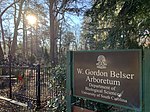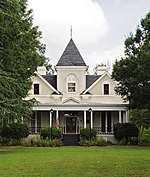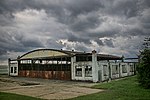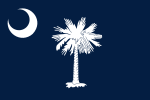William Jennings Bryan Dorn Veterans Affairs Medical Center

William Jennings Bryan Dorn Veterans Affairs Medical Center is a historic hospital complex and national historic district located at Columbia, South Carolina. The district encompasses 19 contributing buildings and a covered walk. Most of the oldest buildings are two- to three-story brick structures and feature a Georgian Colonial Revival architectural style. The original buildings date to 1932, with additional buildings completed in 1937, 1945, and 1946. A major expansion occurred in the 1970s. In 1978, President Jimmy Carter named the hospital after U.S. Representative from South Carolina, William Jennings Bryan Dorn. The complex includes the hospital, recreation, dining, and residential buildings. The complex is operated by the Veterans Health Administration.It was added to the National Register of Historic Places in 2009.
Excerpt from the Wikipedia article William Jennings Bryan Dorn Veterans Affairs Medical Center (License: CC BY-SA 3.0, Authors, Images).William Jennings Bryan Dorn Veterans Affairs Medical Center
Garners Ferry Road, Columbia
Geographical coordinates (GPS) Address Phone number Website External links Nearby Places Show on map
Geographical coordinates (GPS)
| Latitude | Longitude |
|---|---|
| N 33.9775 ° | E -80.961111111111 ° |
Address
Wm. Jennings Bryan Dorn VA Medical Center
Garners Ferry Road 6439
29466 Columbia
South Carolina, United States
Open on Google Maps








